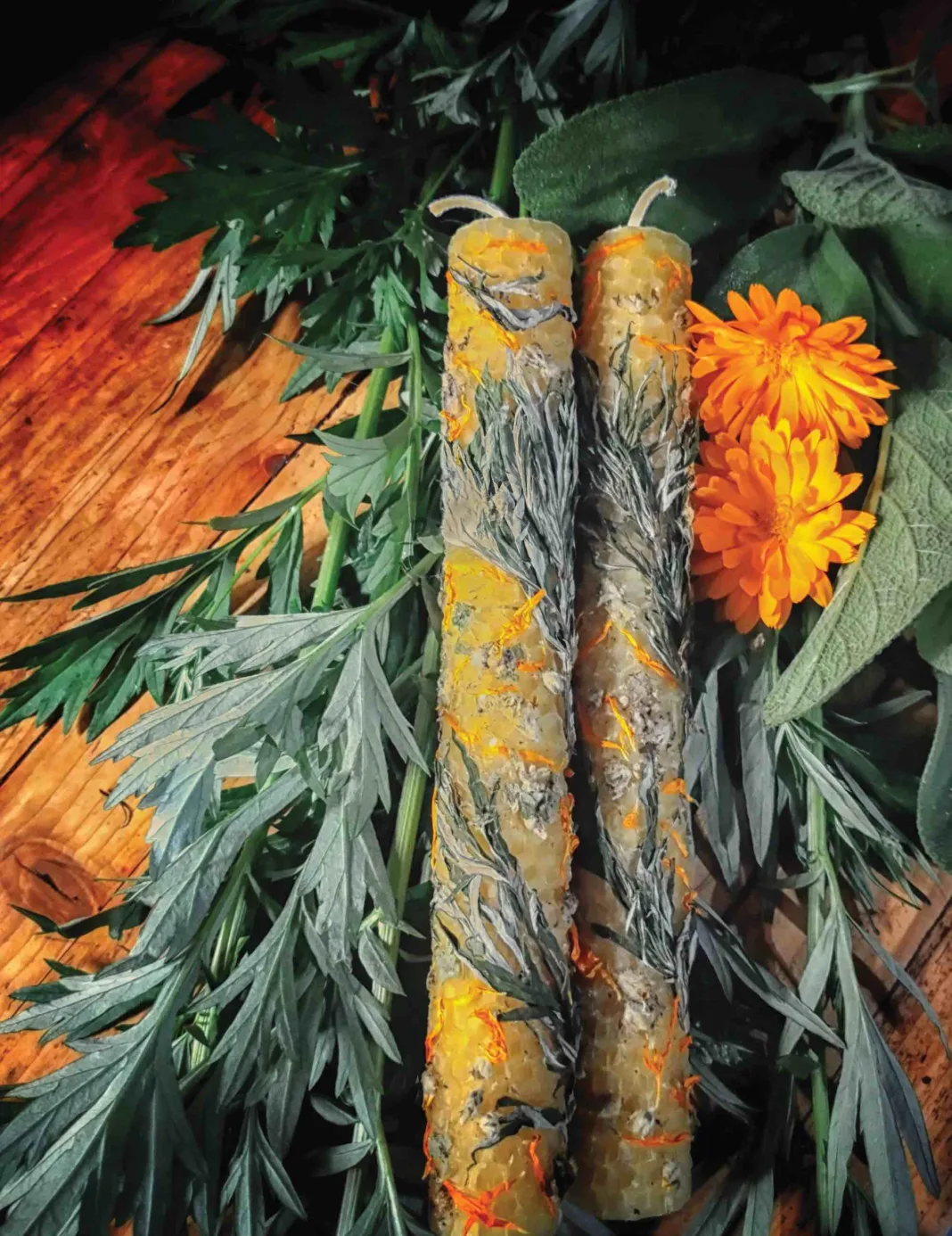Read Pt. 1 – The Woman Who Could Talk To Bees
Throughout history, we’ve been enchanted by bees. Vital to our agriculture and valued for their honey and wax, bees were revered as bringers of wisdom, played a role in community rites, and were associated with deities from cultures all over the world. Beekeepers considered their bees to be a part of the family or community, and because of that, there were many strange traditions associated with tending bees.
In one such tradition, called “telling the bees,” the head of the household would let the bees know when a death had befallen the family. Other family happenings, such as births, marriages, or absence due to war or a long journey, were also shared with the bees. Failing to do so could mean disaster, as the bees may swarm, die, or not produce enough honey for the season.
Bees have also had a long association with witchcraft. Tales of witches dancing unabashedly under a full moon or chanting spells over a large black cauldron are not complete without a black cat or toad whispering to them of dark enchantments and evil deeds. These familiar spirits were often thought to have been low-ranking demons or even fairies and would come most often in the form of a dog, cat, newt, owl, or toad. But bees too were thought to be familiars to witches—maybe because it was believed that bees formed a connection between the spirit realm and the human world, or because of their association with fertility, as couples trying to conceive would be given pots of honey. No matter the reason, we cannot deny our bewitchment with those busy creatures who speak in a symbolic language of dance, can predict the weather, and can read the electric field surrounding flowers. So next time you’re near a hive, feel free to tell the bees “thank you.”
Cauldron Tapers
Autumn brings a chill and a darkness that settles across the land, drawing us to the fireside. Thus begins the dark half of the year for those of us who live in the northern hemisphere. We can celebrate this transition, as October closes and the veil thins between the world of the mundane and that of the otherworld, with a bonfire kindled by beeswax and sacred herbs. Specific herbs such as mugwort, sage, mullein, rosemary, and calendula all have associations with divination, funerary practices, or communication with the spirit world. Rolled onto beeswax tapers and used to light an alder wood (a tree associated with the dead) fire, these herbs can give you a very magical bonfire.
You will need:
• One honeycomb beeswax sheet (8 by 16 inches) cut in half to make 8- by-8-inch sheets for two tapers
• Two lengths of cotton wicking, approximately 9 inches long
• Combination of any of the following herbs and essential oils: mugwort, calendula, sage, mullein, rosemary
• A lighter
To make the candles, lay the wick along the edge of a sheet of beeswax and start rolling the candle by bending over about an eighth of an inch of the wax around the wick. Once secure, roll the candle slowly, making sure to keep it even. When you’ve come to the end, form a smooth edge by gently pressing the edge down onto the side of the candle.
When you’re ready to press your herbs into your candles, use a lighter to quickly and gently warm the wax in the area you’re pressing. Press larger leaves first in a way you find pleasing, followed by smaller petals. If you choose to use essential oil, anoint your candle with it before use.
You can ritually use your tapers to ignite a fire in a cauldron, firepit, or other fireproof container to call in the spirits—or just to enjoy a fragrant fire on a brisk autumn evening.
Warning: These are not meant to be burned in a candle holder—but used only as a fire starter outdoors in a secure fire-safe container.


































